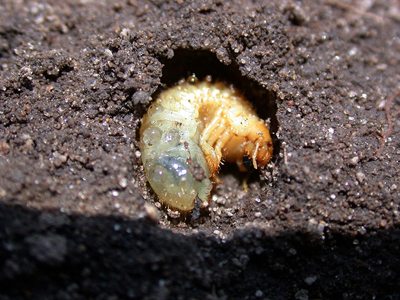Christian Krupke and John Obermeyer
- Most corn and soybean insect pests overwinter beneath the soil surface.
- Soil and snow insulates insects from wild temperature fluctuations.
- Insects change their body chemistry to withstand freezing.
The questions abound from farmers and homeowners alike, did the Polar Vortexes of the 2013/2014 winter reduce insect populations? Though the correct answer is, nobody knows with certainty, but it pays to consider some basic facts.
Insects have adapted to varying environments throughout the world, ranging from desert to frozen tundra. They utilize various means to survive harsh temperature extremes, or some die out and return every year, see table below. Insect pests that overwinter in Midwest, do so under plant residues or in the soil, in order to insulate from wild fluctuations. Most of our key pests have lived in the area for many decades. Once the cold sets in, chemical changes within their body occurs that prevent freezing, and allows for them to “sleep” through the winter. Being induced to “wake up” too early, by unseasonable temperatures during the winter, uses precious body fat reserves. Should this happen multiple times, then death by starvation is likely. So in some ways a long, cold winter has advantages in that the temps are relatively consistent.

White grub in wintering earthen cell
Refer to the chart below. Air and soil (4” depth), temperatures are compared at the Purdue ACRE farm in Tippecanoe County. Average and high/low temperatures are given for the months of December through February. This shows that temperature fluctuations of the air (what we experienced) made for an unbearable winter. Contrast that to the soil temperatures. With the probe just a few inches in the soil, the temperature extremes are greatly tempered. Add to consideration is the snow that was present for much of the state throughout the winter. As you would expect, another insulating blanket to assist the overwinter insect. However, insects that overwinter above the ground, including soybean aphids and bean leaf beetles, will suffer higher mortality as a result of a harsh winter.
So, will insect pests numbers be reduced by the memorable winter of 2013/14? Yes, but they are every winter. For example, rootworm eggs that are laid at, or just below the soil surface, likely desiccate from air exposure. For the female beetles that ventured down soil cracks, earthworm holes, etc. to depths of 6” or more, their eggs will be ready for this season’s corn roots. Same can be said for the assortment of grubs, wireworms and maggots many of which overwinter far below the surface where soil temps are relatively consistent.